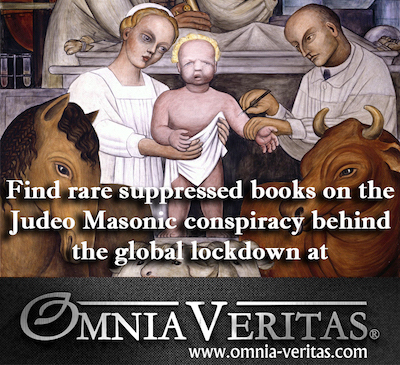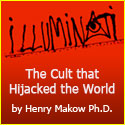Mongolia's "Color Revolution" & Banker Colonization
November 14, 2010
by H. Moric
(for henrymakow.com)
As the bipolar Cold War system ended, a transitory phase of globalization was initiated in order to pave the way for global governance.
The color revolutions of the 21st century were a highly sophisticated method of transforming nation states into such a world system.
Mongolia experienced the draft form of color revolution in its "Red Rose Revolution" in the 1990's. The sparsely populated country was easier to manipulate due to its corrupt politics and post-Communist identity crisis.
As with many buffer states, Mongolia regarded it as beneficial economically, geo-strategically and security-wise to cooperate with larger powers such as the U.S. [1]
The foreign aid and democracy promotion specter of guiding democratic non-violent transition and regime change was handled by the CIA-backed NED.
"The National Endowment for Democracy" worked for several years with the opposition to the governing Mongolian People's Revolutionary Party to achieve a very surprising electoral victory. In the six-year period leading up to the 1996 elections, NED spent close to a million dollars in a country with a population of some 2.5 million, uniting the opposition into a new coalition, the National Democratic Union. [3]
Simultaneously, the neo liberal Western-dominated economic model (Washington Consensus) was applied to the detriment of the country.
James Baker III, one of the world's most powerful men (according to Engdahl), traveled to Ulaanbaatar in 1990 to push this through. [4] Later, USAID provided assistance to some of the largest sell-offs and privatizations of 2003. [5]
This auction of valuable national assets is well documented by experts such as Jean Ziegler. [6] This stratagem was largely due to the MPRP, who also changed their flag emblem by placing a red rose at center.
Perhaps this was a shape of things to come. A decade later, Baker went on to visit Shevardnadze in Georgia ahead of the elections in what became the "rose revolution." [7] The privatization agenda, attributed to the Washington Consensus model of globalization, was in full swing.
CULTURAL INVASION
Apart from the financial, democratic and economic assault came the socio-cultural and educational assault. Thousands of civil society organizations and NGOs descended upon the newly freed country. [8] To date, one of the largest civil society planning organizations is George Soros' Open Society Forum.
Not even the watchdogs of liberty, transparency and "open society" are immune to the deep-rooted corruption of post-socialist Mongolia. There have been instances where Open Forum members have admonished fellow volunteers or workers for NOT accepting bribes. [10]
Indeed, Soros backed the Baker arrangement: "the step-by-step approach advocated by James Baker represents a significant advance...It constitutes a recognition that markets cannot be left to their own devices, that the authorities have to provide some direction if a breakdown is to be avoided."[11] The view of the U.S.-Mongolian Business Council was that "the vast potential of Mongolia can now be fully explored by American firms." [12]
These measures caused the country to stagnate under extreme debt. Not only does Mongolia have to deal with its own deep-rooted corruption but it also has to struggle with foreign feudalization. The price it pays for James Baker's Washington Consensus is dire. Mongolia's GDP of about $2 billion annually goes to service its foreign debt. [13]
The new president of Mongolia has deep ties to the civil society organizations that hold heavy stakes in color revolutions. Mongolia's geostrategic importance cannot be underestimated as a Russia-Chinese buffer state and link to North Korea.
It is considered the only "true friend" of North Korea. Its special relationship with the United States provides access to a very important region. The U.S. may view Mongolia's relationship with North Korea as a way to gain further insight. Appointments by Barack Obama such as former USAID Mission Director and Program Officer Jonathon S. Addleton as ambassador to Mongolia blatantly suggest continued use of color revolution network interference framework (USAID being a CIA cover.)
Current President Elbegdorj Tsakhia started the first independent newspaper during the collapse of Communism in Mongolia. In 1990 he founded Democracy. Like Saakashvili of Georgia, he was educated in the United States, at Harvard. In 2000 he founded the Liberty Center which had received its start up funds from none other than the Soros Foundation,
NED and Pact (which receives funding from and works with USAID). [14] The Georgian Liberty Institute worked closely with the Open Society Institute as well. Some view him as the Barack Obama of Mongolia.
The song remains the same. From Mongolia (1990) to Georgia (2003) to Ukraine (2004) to Kyrgyzstan (2005) and beyond, the usual suspects perpetuated. The Soros assault, IMF, USAID, NED and actors such as James Baker.
Macroeconomic restructuring took place according to the neo-liberal model, as suggested by Soros in his own writings. The IMF-NATO trend is obvious, be it non-violently in Mongolia or violently in the Balkans and Caucasus. It is "a consistent and calculated strategy of employing each successive war zone" or democratic revolution "as a launching pad for new aggression." [15]
H. Moric teaches at a university in Mexico.
Comment and pic. from Dan
 (Left. Mongolian Hip Hop stooge posing on the Illuminati Thaneteros (cult
of sex death) "Eight Rayed Star of Chaos")
(Left. Mongolian Hip Hop stooge posing on the Illuminati Thaneteros (cult
of sex death) "Eight Rayed Star of Chaos")Brilliant, quality work by H. Moric.
Here in the Western Hemisphere we have experience to recognize the familiar strategy and tactics applied to fledgling countries such as Mongolia, which was already done to our cultures decades ago. The Globalists 'new deal' (norvus ordo) unpacks the full spectrum of dominance, Economic, political, and cultural.
Hollywood Illuminati 'hip hop' pumped to Mongolian youth as 'their own'.
http://www.youtube.com/watch?
"Hip-Hop Doing Good Things in Mongolia: Almost every taxi stereo vibrates with its beat, its images inevitably flicker across your screen as you surf the TV news channels, its graffiti is scrawled across the back of buildings and in all the alleyways - it's hip hop, Mongolian hip hop to be precise. In what seems to any foreigner a fascinating transposition of an American cultural icon to an 'exotic' location, Binks set out to learn how the Mongolians have made hip hop their own.
Seeking out the social and political in hip hop is not a new concept. Indeed, it forms part of the movement's very foundations. Born of the then-impoverished and arson stricken New York borough of the Bronx, hip hop was a cultural movement initiated primarily by African-American and Latino youths during the 1970s.
From the days of disaffected youths finding freedom of expression through their street art, hip hop has since become a global (and commercial) phenomenon. The Foreign Policy Journal states, "hip hop is a lingua franca that binds young people all around the world, all while giving them the chance to alter it with their own national flavor".[1] Hip hop of the Mongolian variety began in the early 1990's, as the country experienced an explosion in popular culture following the arrival of democracy. "
Yeah, right. The article goes on to reveal the rationalization promoted to target cultures around the globe to make teenagers believe that their culture invented this shit.
"Some say hip-hop comes from Africa. But I think it also comes from the way the shamans used to chant in the Genghis Khan period. The shamans use a drum, and those rhythms are similar to today's hip-hop," he says.
[1] "It's a Hip Hop World", article in Council on Foreign Relations' propaganda mag Foreign Policy Journal.
http://www.foreignpolicy.com/






